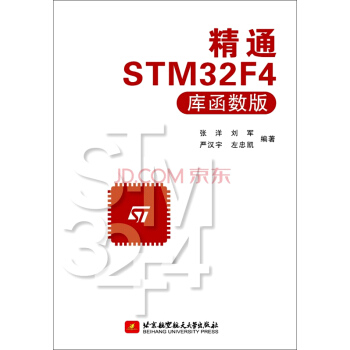

具体描述
内容简介
本书是经典的离散数学教材,为全球多所大学广为采用。本书全面而系统地介绍了离散数学的理论和方法,内容涉及逻辑和证明,集合、函数、序列、求和与矩阵,计数,关系,图,树,布尔代数。全书取材广泛,除包括定义、定理的严格陈述外,还配备大量的实例和图表说明、各种练习和题目。第7版在前六版的基础上做了大量的改进,使其成为更有效的教学工具。本书可作为高等院校数学、计算机科学和计算机工程等专业的教材或参考书。作者简介
Kenneth H. Rosen,1972年获密歇根大学数学学士学位,1976年获麻省理工学院数学博士学位,1982年加入贝尔实验室,现为AT&T;实验室特别成员,国际知名的计算机数学专家,除本书外,还著有《初等数论及其应用》等书。目录
??
The Adapter 's Words
Preface
About the Author
The Companion Website
To the Student
List of Symbols
1 The Foundations: Logic and Proofs.
1.1 Propositional Logic
1.2 Applications of Propositional Logic
1.3 Propositional Equivalences.
1.4 Predicates and Quantifiers
1.5 Nested Quantifiers.
1.6 Rules of Inference.
1.7 Introduction to Proofs
1.8 Proof Methods and Strategy.
End-of-Chapter Material.
2 Basic Structures: Sets, Functions, Sequences, Sums, and Matrices
2.1 Sets..
2.2 Set Operations
2.3 Functions
2.4 Sequences and Summations.
2.5 Cardinality of Sets
2.6 Matrices
End-of-Chapter Material
3 Counting
3.1 The Basics of Counting
3.2 The Pigeonhole Principle.
3.3 Permutations and Combinations.
3.4 Binomial Coefficients and Identities
3.5 Generalized Permutations and Combinations.
3.6 Generating ermutations and Combinations
End-of-Chapter Material
4 Advanced Counting Techniques
4.1 Applications of Recurrence Relations
4.2 Solving Linear Recurrence Relations
4.3 Divide-and-Conquer Algorithms and Recurrence Relations
4.4 Generating Functions
4.5 Inclusion xclusion.
4.6 Applications of Inclusion xclusion
End-of-Chapter Material..
5 Relations.
5.1 Relations and Their Properties
5.2 n-ary Relations and Their Applications
5.3 Representing Relations.
5.4 Closures of Relations
5.5 Equivalence Relations.
5.6 Partial Orderings.
End-of-Chapter Material.
6 Graphs.
6.1 Graphs and Graph Models.
6.2 Graph Terminology and Special Types of Graphs
6.3 Representing Graphs and Graph Isomorphism.
6.4 Connectivity.
6.5 Euler and Hamilton Paths.
6.6 Shortest-Path Problems.
6.7 Planar Graphs.
6.8 Graph Coloring.
End-of-Chapter Material
7 Trees
7.1 Introduction to Trees.
7.2 Applications of Trees.
7.3 Tree Traversal.
7.4 Spanning Trees
7.5 Minimum Spanning Trees
End-of-Chapter Material.
8 Boolean Algebra
8.1 Boolean Functions
8.2 Representing Boolean Functions
8.3 Logic Gates
8.4 Minimization of Circuits
End-of-Chapter Material..
Suggested Readings
Answers to Exercises
前言/序言
PrefaceIn writing this book, I was guided by my long-standing experience and interest in teaching discrete mathematics. For the student, my purpose was to present material in a precise, readable manner, with the concepts and techniques of discrete mathematics clearly presented and demonstrated. My goal was to show the relevance and practicality of discrete mathematics to students, who are often skeptical. I wanted to give students studying computer science all of the mathematical foundations they need for their future studies. I wanted to give mathematics students an understanding of important mathematical concepts together with a sense of why these concepts are important for applications. And most importantly, I wanted to accomplish these goals without watering down the material.For the instructor, my purpose was to design a flexible, comprehensive teaching tool using proven pedagogical techniques in mathematics. I wanted to provide instructors with a package of materials that they could use to teach discrete mathematics effectively and efficiently in the most appropriate manner for their particular set of students. I hope that I have achieved these goals.I have been extremely gratified by the tremendous success of this text. The many improvements in the seventh edition have been made possible by the feedback and suggestions of a large number of instructors and students at many of the more than 600 North American schools, and at any many universities in parts of the world, where this book has been successfully used.This text is designed for a one-or two-term introductory discrete mathematics course taken by students in a wide variety of majors, including mathematics, computer science, and engineering. College algebra is the only explicit prerequisite, although a certain degree of mathematical maturity is needed to study discrete mathematics in a meaningful way. This book has been designed to meet the needs of almost all types of introductory discrete mathematics courses. It is highly flexible and extremely comprehensive. The book is designed not only to be a successful textbook, but also to serve as valuable resource students can consult throughout their studies and professional life.Goals of a Discrete Mathematics CourseA discrete mathematics course has more than one purpose. Students should learn a particular set of mathematical facts and how to apply them; more importantly, such a course should teach students how to think logically and mathematically. To achieve these goals, this text stresses mathematical reasoning and the different ways problems are solved. Five important themes are interwoven in this text: mathematical reasoning, combinatorial analysis, discrete structures, algorithmic thinking, and applications and modeling. A successful discrete mathematics course should carefully blend and balance all five themes.1. Mathematical Reasoning: Students must understand mathematical reasoning in order to read, comprehend, and construct mathematical arguments. This text starts with a discussion of mathematical logic, which serves as the foundation for the subsequent discussions of methods of proof. Both the science and the art of constructing proofs are addressed. The technique of mathematical induction is stressed through many different types of examples of such proofs and a careful explanation of why mathematical induction is a valid proof technique.2. Combinatorial Analysis: An important problem-solving skill is the ability to count or enumerate objects. The discussion of enumeration in this book begins with the basic techniques of counting. The stress is on performing combinatorial analysis to solve counting problems and analyz ealgorithms, not on applying formulae.3. Discrete Structures: A course in discrete mathematics should teach students how to work with discrete structures, which are the abstract mathematical structures used to represent discrete objects and relationships between these objects. These discrete structures include sets, permutations, relations, graphs, trees, and finite-state machines.4. Algor用户评价
老实说,一开始拿到这本《离散数学及其应用》时,我内心是有些忐忑的。毕竟“离散数学”这个名字听起来就充满了挑战性,而且还是英文原版精编,担心自己会看不懂。然而,当我真正沉浸其中后,这种担忧便烟消云散了。这本书的语言风格非常地道,同时又相对易于理解,即便是对于非母语的读者来说,通过上下文和作者精心设计的例子,也能逐步领会。书中对数学概念的解释,总是能够从多个角度进行阐述,既有严谨的数学定义,又有生动的实际应用场景。比如,在讲解组合数学中的排列组合时,作者会联系到密码学中的密钥生成、计算机科学中的算法分析等,这些真实的案例极大地激发了我学习的兴趣,让我明白了离散数学并非象牙塔里的理论,而是支撑着现代科技发展的基石。此外,书中为数众多的习题,从基础巩固到挑战思考,梯度设计得非常合理,让我能够循序渐进地提升自己的解题能力。我经常在做完一道题后,会反复琢磨作者提供的解答思路,从中汲取更多的解题技巧和数学思想。
评分这本书的封面设计就给我一种非常厚重、严谨的感觉,金属质感的书名印刷和深邃的背景色,无声地诉说着它内在的知识深度。翻开第一页,扑面而来的不是枯燥的定义和符号,而是作者用一种循循善诱的笔触,将数学的逻辑之美娓娓道来。我尤其喜欢它在引入新概念时,往往会先给出一个生活化的例子,比如在讲集合论时,会用“班级里的学生”或者“图书馆的书籍”来类比,这样一下子就拉近了抽象数学与我们日常生活的距离。而且,书中那些精美的图示,例如图论中的各种网络模型,简直就是艺术品,清晰地展示了节点与边的关系,让我这个初学者也能迅速抓住重点。作者在数学定理的证明部分,也非常注重逻辑的严谨性,每一步推导都清晰可见,并且会适时地给出一些提示,引导读者自己去思考。我曾经在学习其他数学书籍时,对于证明过程感到十分困惑,但在这本书里,我却能体会到一种“拨云见日”的畅快感。它不仅仅是一本教材,更像是一位耐心细致的良师益友,带领我一步步探索离散数学的奇妙世界。
评分作为一名在计算机科学领域摸爬滚打多年的工程师,我深知扎实的数学基础对于理解和解决复杂问题的重要性。而《离散数学及其应用》这本书,恰恰是我一直在寻找的那本“利器”。它在内容的选取和编排上,充分考虑到了计算机科学专业的需求,例如在布尔代数、图论、关系、函数以及算法分析等章节,都给出了详实的讲解和与计算机相关的应用示例。书中对图论的阐述尤其让我印象深刻,它不仅介绍了各种图的定义和性质,还详细讲解了诸如最短路径算法、最小生成树算法等经典算法,并且对它们的复杂度进行了分析,这对于我理解算法的效率至关重要。而且,作者在讲解这些算法时,不仅仅是给出代码,更重要的是解释了算法背后的数学原理和逻辑推理,让我能够知其然,更知其所以然。这本书的条理非常清晰,每个章节都围绕着一个核心主题展开,逻辑性强,循序渐进,即使是遇到复杂的证明,作者也会将其分解成多个易于理解的步骤。
评分我是一名对抽象数学理论充满好奇的学生,在尝试了市面上的一些其他离散数学书籍后,总觉得它们要么过于理论化,要么应用场景不够贴切。直到我发现了这本《离散数学及其应用》(英文精编版·第7版),才真正找到了“归宿”。这本书最大的特色在于它对概念的抽象性与实际应用的连接做得非常到位。作者在介绍每一个核心概念(如概率论、信息论、编码理论等)时,都会辅以大量精心设计的例子,这些例子不仅来自于经典的数学问题,更有不少是与现代信息技术、网络安全、人工智能等前沿领域紧密相关的。我印象特别深刻的是,书中关于“编码理论”的部分,用非常直观的方式解释了如何构建纠错码,这对于我理解数据传输的可靠性非常有帮助。而且,这本书的排版设计也非常优秀,清晰的章节划分、醒目的公式标注、高质量的插图,都极大地提升了阅读体验。每一章最后的思考题和习题,都经过精心设计,能够有效地检验和巩固所学知识。
评分这本书带给我的最大惊喜,莫过于它在概念的阐述上所展现出的那种“深度”与“广度”的完美结合。不同于一些只追求概念覆盖率的教材,它在每一个数学概念的讲解上,都力求做到深入浅出。例如,在讲解数理逻辑时,作者并没有止步于命题逻辑和谓词逻辑的表层介绍,而是深入探讨了逻辑公理、推理规则以及它们在形式化证明中的作用。更难能可贵的是,书中还穿插了一些历史故事和数学家的趣闻轶事,这使得枯燥的数学学习过程变得更加生动有趣,也让我对离散数学的发展历程有了更直观的认识。我特别喜欢书中关于“证明”的部分,它不仅仅是给出结论,更重要的是教会我如何去构建一个严谨的数学证明,如何去思考“为什么”和“如何证明”。这种思维训练,对我日后在学术研究和解决实际问题时都大有裨益。可以说,这本书不仅仅是在传授知识,更是在塑造一种严谨的数学思维方式。
评分书很不错,印刷好,包装也棒棒哒
评分[ZZ]写的很好,感觉书还不错 还没有仔细看 东西写得比较详细 “我只要在搜索框内输入[SM]、[ZZ],就会有好多书摆在我面前供我挑选,价格方面还可以打折,这样便捷与优惠的购书方式我怎么可能不选择呢!”经常在网上购物的弟弟幸福的告诉我。据调查统计,当前网上书店做得较好的的网站有京东等。现在大街小巷很多人都会互相问候道:“今天你京东了吗?”,因为网络购书已经得到了众多书本爱好者的信任,也越来越流行。基于此,我打开网页,开始在京东狂挑书。一直想买这书,又觉得对它了解太少,买了这本书,非常好,喜欢作者的感慨,不光是看历史或者史诗书,这样的感觉是好,就是书中的字太小了点,不利于保护视力!等了我2个星期,快递送到了传达室也不来个电话,自己打京东客服查到的。书是正版。通读这本书,是需要细火慢烤地慢慢品味和幽寂沉思的。亲切、随意、简略,给人洁净而又深沉的感触,这样的书我久矣读不到了,今天读来实在是一件叫人高兴之事。作者审视历史,拷问灵魂,洋溢着哲思的火花。人生是一段段的旅程,也是需要承载物的。因为火车,发生过多少相聚和分离。当一声低鸣响起,多少记忆将载入历史的尘梦中啊。其实这本书一开始我也没看上,是朋友极力推荐加上书封那个有点像史努比的小人无辜又无奈的小眼神吸引了我,决定只是翻一下就好,不过那开篇的序言之幽默一下子便抓住了我的眼睛,一个词来形容——“太逗了”。|据悉,京东已经建立华北、华东、华南、西南、华中、东北六大物流中心,同时在全国超过360座城市建立核心城市配送站。是中国最大的综合网络零售商,是中国电子商务领域最受消费者欢迎和最具有影响力的电子商务网站之一,在线销售家电、数码通讯、电脑、家居百货、服装服饰、母婴、图书、食品、在线旅游等12大类数万个品牌百万种优质商品。选择京东。好了,现在给大家介绍两本好书: 《爱情急救手册》是陆琪在研究上千个真实情感案例,分析情感问题数年后,首次集结成的最实用的爱情工具书。书中没有任何拖沓的心理和情绪教程,而是直接了当的提出问题解决问题,对爱情中不同阶段可能遇到的问题,单身的会遇到被称为剩男(剩女)的压力、会被家人安排相亲、也可能暗恋无终,恋爱的可能会遇到被种种问题,而已婚的可能会遇到吵架、等问题,所有问题一一给出解决方案。陆琪以闺蜜和奶爸的语重心长告诉你各种情感秘籍,让你一看就懂,一做就成。是中国首部最接底气的爱情急救手册。《谢谢你离开我》是张小娴在《想念》后时隔两年推出的新散文集。从拿到文稿到把它送到读者面前,几个月的时间,欣喜与不舍交杂。这是张小娴最美的散文。美在每个充满灵性的文字,美在细细道来的倾诉话语。美在张小娴书写时真实饱满的情绪,更美在打动人心的厚重情感。从装祯到设计前所未有的突破,每个精致跳动的文字,不再只是黑白配,而是有了鲜艳的色彩,首次全彩印刷,法国著名唯美派插画大师,亲绘插图。两年的等待加最美的文字,[SM],就是你面前这本最值得期待的新作.
评分学习原版比学习翻译本更好,最需要的是数学基础,对英语要求倒是并不高。如果看翻译本,要是理解错了,可要误你一辈子。
评分[ZZ]写的很好,感觉书还不错 还没有仔细看 东西写得比较详细 “我只要在搜索框内输入[SM]、[ZZ],就会有好多书摆在我面前供我挑选,价格方面还可以打折,这样便捷与优惠的购书方式我怎么可能不选择呢!”经常在网上购物的弟弟幸福的告诉我。据调查统计,当前网上书店做得较好的的网站有京东等。现在大街小巷很多人都会互相问候道:“今天你京东了吗?”,因为网络购书已经得到了众多书本爱好者的信任,也越来越流行。基于此,我打开网页,开始在京东狂挑书。一直想买这书,又觉得对它了解太少,买了这本书,非常好,喜欢作者的感慨,不光是看历史或者史诗书,这样的感觉是好,就是书中的字太小了点,不利于保护视力!等了我2个星期,快递送到了传达室也不来个电话,自己打京东客服查到的。书是正版。通读这本书,是需要细火慢烤地慢慢品味和幽寂沉思的。亲切、随意、简略,给人洁净而又深沉的感触,这样的书我久矣读不到了,今天读来实在是一件叫人高兴之事。作者审视历史,拷问灵魂,洋溢着哲思的火花。人生是一段段的旅程,也是需要承载物的。因为火车,发生过多少相聚和分离。当一声低鸣响起,多少记忆将载入历史的尘梦中啊。其实这本书一开始我也没看上,是朋友极力推荐加上书封那个有点像史努比的小人无辜又无奈的小眼神吸引了我,决定只是翻一下就好,不过那开篇的序言之幽默一下子便抓住了我的眼睛,一个词来形容——“太逗了”。|据悉,京东已经建立华北、华东、华南、西南、华中、东北六大物流中心,同时在全国超过360座城市建立核心城市配送站。是中国最大的综合网络零售商,是中国电子商务领域最受消费者欢迎和最具有影响力的电子商务网站之一,在线销售家电、数码通讯、电脑、家居百货、服装服饰、母婴、图书、食品、在线旅游等12大类数万个品牌百万种优质商品。选择京东。好了,现在给大家介绍两本好书: 《爱情急救手册》是陆琪在研究上千个真实情感案例,分析情感问题数年后,首次集结成的最实用的爱情工具书。书中没有任何拖沓的心理和情绪教程,而是直接了当的提出问题解决问题,对爱情中不同阶段可能遇到的问题,单身的会遇到被称为剩男(剩女)的压力、会被家人安排相亲、也可能暗恋无终,恋爱的可能会遇到被种种问题,而已婚的可能会遇到吵架、等问题,所有问题一一给出解决方案。陆琪以闺蜜和奶爸的语重心长告诉你各种情感秘籍,让你一看就懂,一做就成。是中国首部最接底气的爱情急救手册。《谢谢你离开我》是张小娴在《想念》后时隔两年推出的新散文集。从拿到文稿到把它送到读者面前,几个月的时间,欣喜与不舍交杂。这是张小娴最美的散文。美在每个充满灵性的文字,美在细细道来的倾诉话语。美在张小娴书写时真实饱满的情绪,更美在打动人心的厚重情感。从装祯到设计前所未有的突破,每个精致跳动的文字,不再只是黑白配,而是有了鲜艳的色彩,首次全彩印刷,法国著名唯美派插画大师,亲绘插图。两年的等待加最美的文字,[SM],就是你面前这本最值得期待的新作.
评分太好用了!!真的。。
评分非常不错,物流很快,京东就是叼
评分字实在有些小,看的时候有点累
评分不错不错不错不错不错
评分国外的教材,能重复再版的一般都是久经考验的好书,这本书英文已经出到第6版了,功力自是炉火纯青,经典之作毋庸置疑。 首先值得一说的是虽然本书包含了大量内容,但章节编排都相当合理:象从逻辑开始,逐步过度到定理的证明;从集合过度到函数,从函数过度到递归;从组合数学到概率,等等。整本书阅读起来很畅顺,当词典查阅也很方便。 书中还穿插了众多数学家的生平八卦,让读者在有趣(或者,枯燥?)的阅读当中增......
相关图书
本站所有内容均为互联网搜索引擎提供的公开搜索信息,本站不存储任何数据与内容,任何内容与数据均与本站无关,如有需要请联系相关搜索引擎包括但不限于百度,google,bing,sogou 等
© 2025 book.idnshop.cc All Rights Reserved. 静思书屋 版权所有


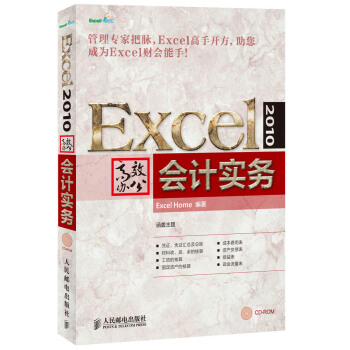

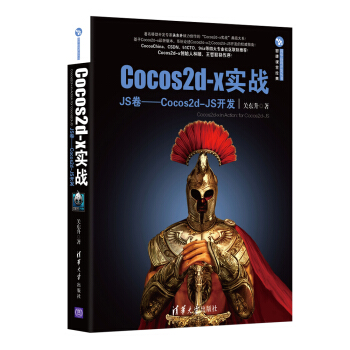

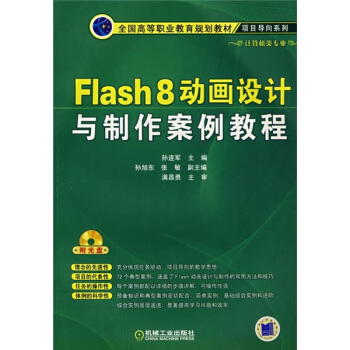
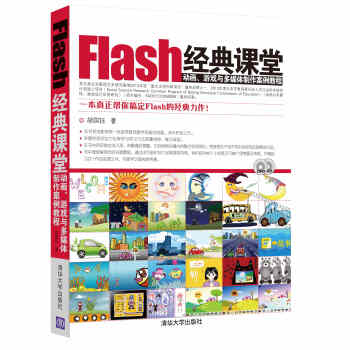

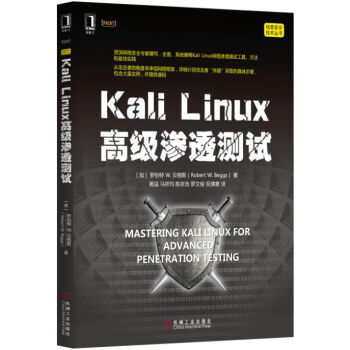


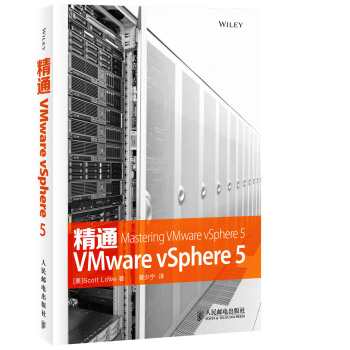
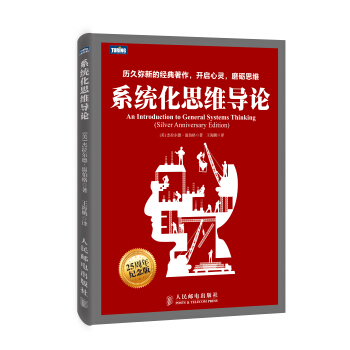


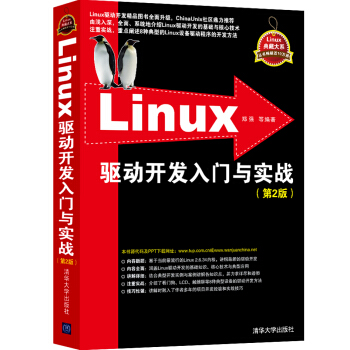
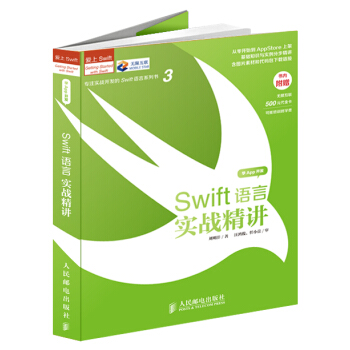

![可怕的科学·科学新知系列:超能电脑 [Crashing Computers] pdf epub mobi 电子书 下载](https://pic.tinynews.org/10516377/55828c7aN0d46abbd.jpg)
